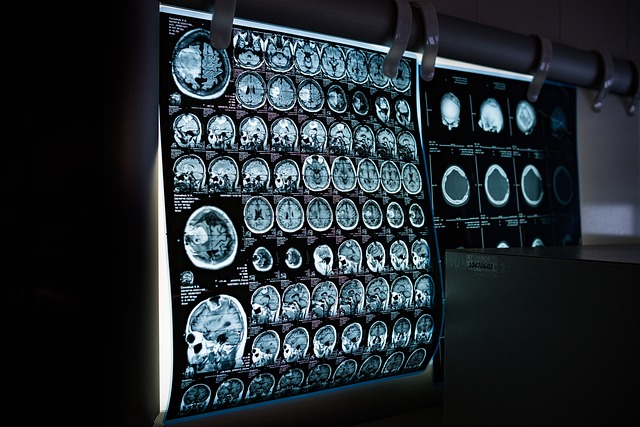Recognize Heart Attack Warning Signs Early
Heart attacks are a leading cause of death worldwide, but recognizing the early signs can be crucial for timely intervention and improved outcomes. While chest pain is commonly associated with heart attacks, there are several other warning signs that people should be aware of. This article will explore the various symptoms and early indicators of a heart attack, helping you better understand when to seek immediate medical attention.

What are the common signs and symptoms of a heart attack?
Heart attacks occur when blood flow to part of the heart muscle is blocked, causing tissue damage. The most recognized symptom is chest pain or discomfort that feels like pressure, squeezing, fullness, or pain in the center or left side of the chest. This discomfort may last for more than a few minutes or go away and come back. However, chest pain isn’t always the most prominent symptom, especially in women, older adults, and people with diabetes.
Other common symptoms include shortness of breath, which can occur with or without chest discomfort. Many patients describe feeling as though they ran a marathon despite being at rest. Cold sweats often accompany heart attacks, with patients suddenly breaking into a sweat for no apparent reason. Nausea and vomiting are also frequent symptoms that can be mistaken for food poisoning or stomach flu. Additionally, lightheadedness or sudden dizziness may occur as blood pressure drops during a cardiac event.
What are the early signs of heart attack to look for?
Early warning signs can appear days or even weeks before a major cardiac event. One of the earliest indicators is unusual fatigue that isn’t related to physical exertion. This isn’t ordinary tiredness but rather extreme exhaustion that makes everyday activities difficult. Sleep disturbances, including insomnia or waking up feeling unusually tired despite adequate sleep, can signal impending heart problems.
Another early warning sign is anxiety that seems to appear out of nowhere. Some patients describe feeling a sense of doom or that something is seriously wrong without being able to pinpoint why. Mild pain in the chest, shoulders, arms, neck, jaw, or back that comes and goes is also concerning. This discomfort might feel like pressure, burning, or tightness rather than sharp pain. Additionally, persistent coughing or wheezing, especially when lying down, can indicate fluid buildup in the lungs due to heart failure, which may precede a heart attack.
What are some hidden signs of heart attack?
Some heart attack symptoms are less obvious and often overlooked. Women, in particular, experience heart attacks differently than men do. They’re more likely to have symptoms like pain or discomfort in the upper back, shoulders, or jaw without any chest pain at all. Some describe it as feeling like a pulled muscle that won’t go away.
Digestive disturbances represent another set of hidden symptoms that people rarely associate with heart problems. These include indigestion, nausea, vomiting, and stomach pain that doesn’t respond to antacids or other digestive remedies. Swelling in the legs, ankles, feet, or abdomen due to fluid retention can also signal heart trouble. Additionally, heart rhythm changes, such as heart palpitations, irregular heartbeats, or a racing heart, may occur before a heart attack. Some patients report experiencing these irregularities for days or weeks before their cardiac event.
What are the 7 warning signs of heart attack?
Medical experts typically highlight seven critical warning signs that should never be ignored:
-
Chest pain or discomfort: This remains the most common symptom, described as pressure, squeezing, fullness, or pain in the center or left side of the chest.
-
Upper body discomfort: Pain or discomfort in one or both arms, the back, neck, jaw, or stomach can signal heart trouble.
-
Shortness of breath: Difficulty breathing with or without chest discomfort warrants immediate attention.
-
Cold sweat: Suddenly breaking into a sweat accompanied by cold, clammy skin can indicate a heart attack.
-
Nausea or vomiting: These digestive symptoms often accompany other heart attack signs.
-
Lightheadedness or dizziness: Feeling faint or losing consciousness may occur during a heart attack.
-
Extreme fatigue: Unusual tiredness that persists, especially when accompanied by other symptoms, should not be dismissed.
It’s important to note that not everyone will experience all seven symptoms. Some people might have just one or two, while others might experience several simultaneously. The severity can also vary significantly from person to person.
How can you differentiate between heartburn and heart attack?
Many people mistake heart attack symptoms for heartburn because both conditions can cause chest discomfort. However, several key differences can help distinguish between them. Heartburn typically causes a burning sensation that starts in the upper abdomen and moves upward into the chest. It often occurs after eating, when lying down, or bending over, and improves with antacids. The pain rarely radiates to the shoulders, neck, or arms.
In contrast, heart attack pain typically starts in the center or left side of the chest and may radiate to the arms, shoulders, neck, jaw, or back. It’s usually not related to body position and doesn’t improve with antacids. Heart attack pain is commonly accompanied by additional symptoms like shortness of breath, cold sweats, nausea, or lightheadedness—symptoms not typically associated with heartburn.
If you’re unsure whether you’re experiencing heartburn or a heart attack, it’s always better to err on the side of caution and seek immediate medical attention. The consequences of mistaking a heart attack for heartburn can be life-threatening.
Conclusion
Recognizing the early warning signs of a heart attack can be the difference between life and death. While chest pain remains a hallmark symptom, it’s crucial to understand that heart attacks can present in many different ways. Women, older adults, and people with diabetes may experience more subtle or atypical symptoms. Being aware of both the common and hidden signs, understanding the key differences between heartburn and heart attack symptoms, and knowing when to seek emergency care can help save lives. Remember that minutes matter during a heart attack—the sooner treatment begins, the better the chances of survival and recovery.
This article is for informational purposes only and should not be considered medical advice. Please consult a qualified healthcare professional for personalized guidance and treatment.




